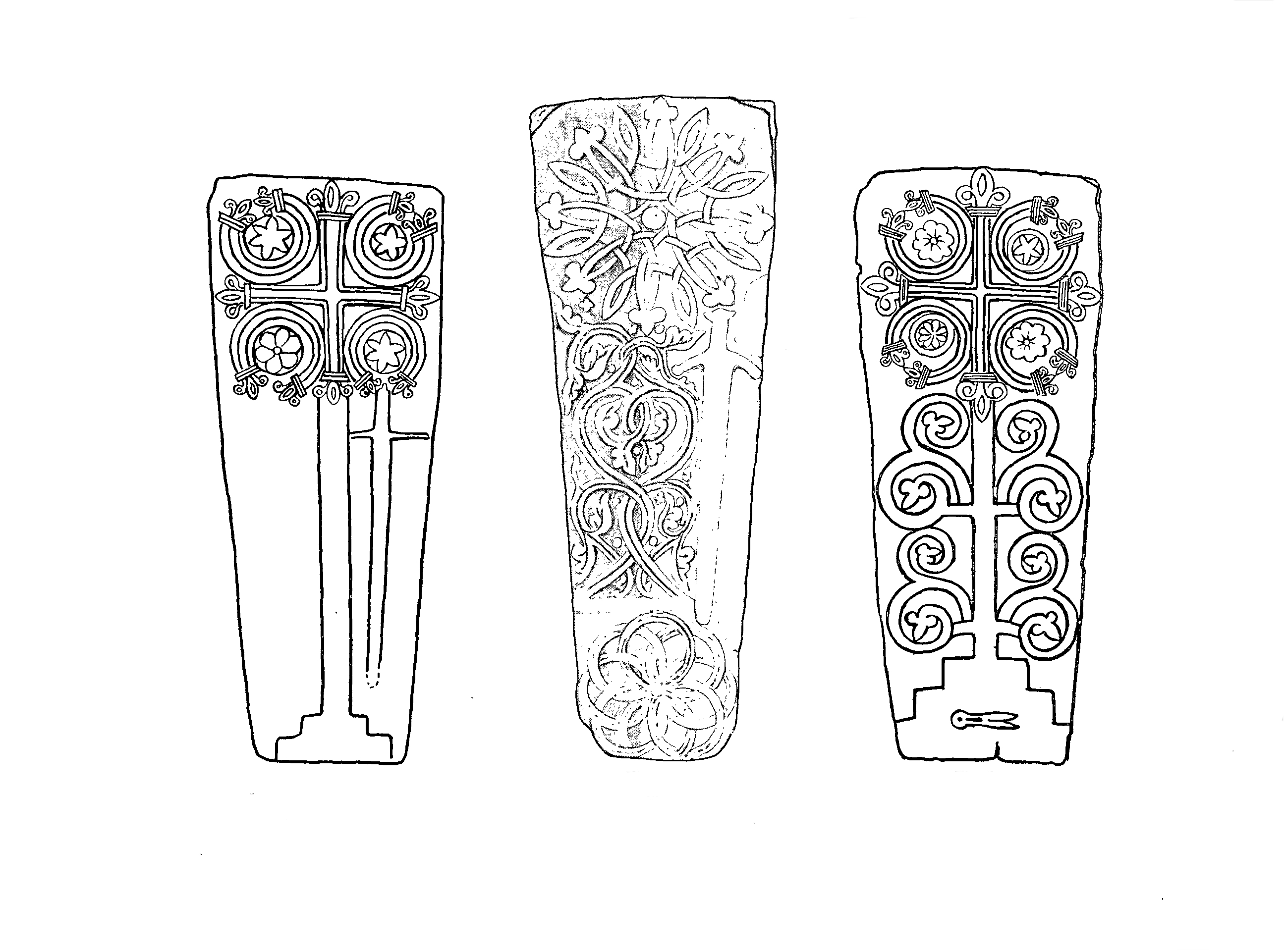Inverness Deanery
Bona
Parish Church: OS Ref: NGR NH 572346 H.E.S. No: NH63NW 3 Dedication: St Curadan (St Finian?)
Associated Chapels: Cladh Uradain {NGR NH 602385}
It is thought that the original site of the church of this parish was in the old graveyard of Killianan (Cill-Fhianan), where the Burn of Abriachan falls into Loch Ness, half-way between Inverness and Glen Urquhart {NGR NH 572346}.1 This graveyard has been in use for a very long time. The dedication preserved here is to St Finian (c.550-600AD). There can be no doubt that an ancient church did exist here since "a church at Abriachan" is mentioned as early as 1239. On 30 December 1239, Bishop Andrew de Moravia included this church (here called Abirihacyn) in his list of those which he intended to make 'common' churches of the Chapter.4 However, it would seem that this intention was never carried out and the church remained 'independent' up to the time of the Second Reformation.

Above: Three early burial-slabs that lay at Kilmore, Abriachan.
© PSAS Vol.36 (1901-02), 667. (From drawings by Mr Angus Grant)
In 1989, whilst clearing was being done nearby on the site of Abriachan Nurseries, a cross-incised sandstone block was revealed which is believed to date from the 7th-9th centuries and which, because it had been lying face down, was in a very good state of preservation.
The lands of Abriachan, consisting of 1 dabhach, were held by the Bishop of Moray. In 1544, these Abriachan lands, part of the ancient Barony of Kinmylies, were granted by the then Bishop, Patrick Hepburn (1538-1573),2 to Hugh, Lord Lovat.
It is to be hoped that the comment by one author describing the people of Abriachan can no longer be held to be accurate. They are "regarded by neighbouring districts as rough, uncultured and quarrelsome. They engage a lot in illicit whisky-making using fires of burned heather and juniper which raises very little smoke"!
Clad Uradain: There is an old graveyard known as Cladh Uradain at Kirkton {NGR NH 602385} at the northern end of the Loch. Nearby is also the place-name Suidhe Uradain, "the Seat of Curitan" {NGR NH 595387}. The old maps indicate that there was a church here, in the graveyard, but there are no remains to be found.3 Both of these place-names create a link with the early foundation at Rosemarkie which is associated with St Curitan (Curadain). Below the graveyard is the Abban Water (Gael: Ában "a backwater") beside which there was a supposed Roman Signalling Station called Banatia, although many writers discount any Roman connections. Close by is the site of the medieval Castle Spirital which used to control the old ford here across the outlet from the Loch.
Clergy:
1233 A Vicar of Bona, Elias, is recorded in 1233.5
1. NSA. (1834-1845) The new statistical account of Scotland by the ministers of the respective parishes under the superintendence of a committee of the society for the benefit of the sons and daughters of the clergy, 15v. Edinburgh. Page(s): Vol. 14, Inverness-shire.
2. Bishop Hepburn was a great dilapidator of the episcopal estates but, perhaps, the main cause of his 'notoriety' was the fact that he is said to have fathered even more illegitimate children than the King!
3. The Free Church building which stands beside the graveyard is of the 19th century.
4. Registrum Episcopatus Moraviensis, no.41, p.35
5. Scott, Hew (1915) Fast Ecclesiae Scoticanae. Edinburgh: Oliver and Boyd. Vol.6, p.454
e-mail: admin@cushnieent.com
© 2019 Cushnie Enterprises
